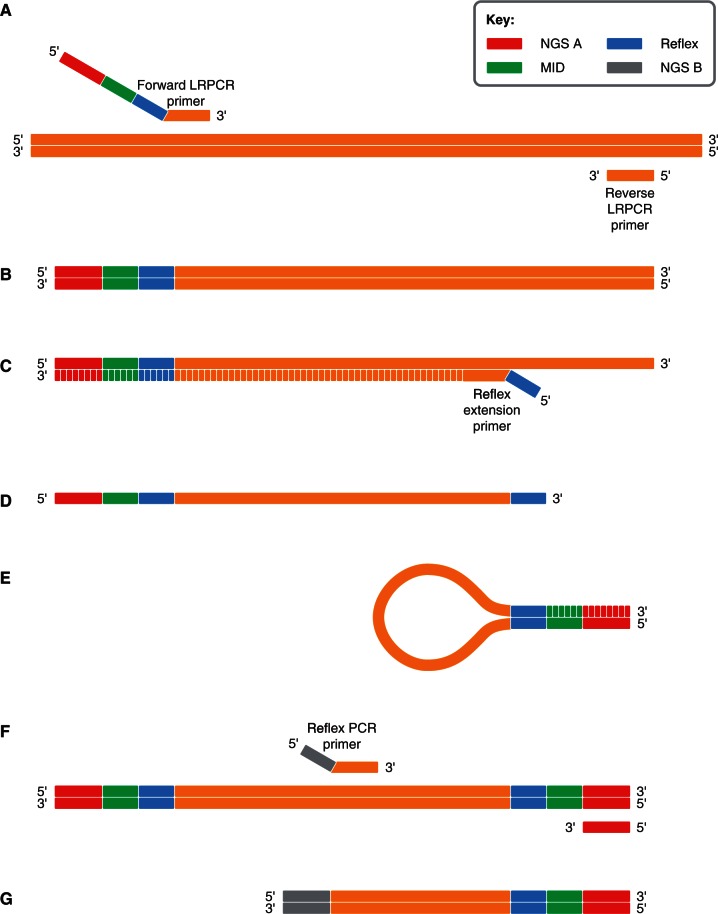Figure 1.
The Reflex workflow. The annealing positions and structure of the long-range PCR primers are shown in (A), not to scale. We generate sample-indexed long-range PCR amplicons (B), then quantify and mix them equimolarly to create a population pool. We anneal and extend a reflex-tailed extension primer (C) and extend another primer (NGS A) to reverse the polarity and generate the reflex reaction template (D). We anneal the complementary reflex sequences intramolecularly and polymerase extend to copy the MID and NGS A sequences (E) before copying back with a primer annealing at NGS A to make the material double-stranded (F). Finally, we PCR amplify the reflex products with a primer annealing at NGS A and another tailed with NGS B (shown in F) to produce sample-indexed amplicons of suitable size for NGS (G).

